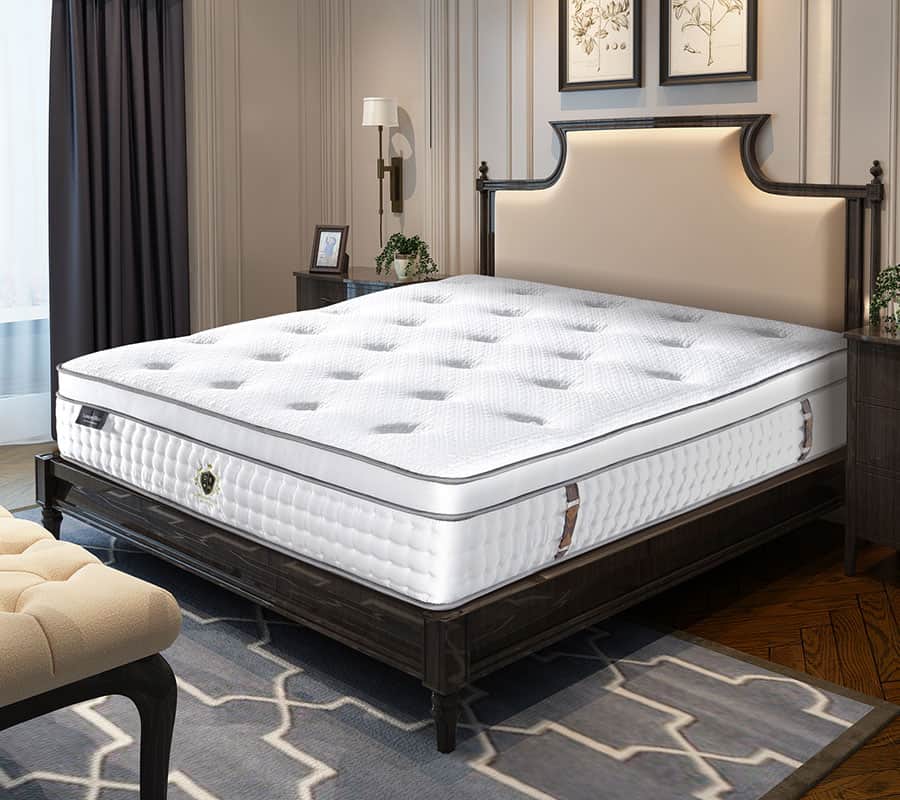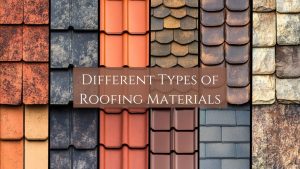
Mattresses have a huge impact on your sleep schedule which this generation has been missing a lot. We’d say invest in a good piece of mattress and get your beauty sleep. But buying the right one can be a daunting task too and since it is a major investment, we are here to help you out. You’ll be faced with a variety of mattresses and we have narrowed down the option by cost, quality, and comfort for your convenience.
There are three different types of mattresses as mentioned below. The first thing you need to know is which type of mattress is best? Further, we have the details explained in simple words.
- Innerspring Mattress
- Foam Mattress
- Hybrid Mattress
Types of Mattresses: Innerspring Mattress
Spring mattresses are traditional type mattresses made up of a layer of coils and surrounded by a layer of material like foam, natural fibers, or latex. There exist different types of spring mattresses and they all use different types of layouts and coils to obtain different levels of comfort.
Advantages Of Innerspring Mattress
- Innerspring mattresses offer very solid back support.
- These mattresses are available in a broad range of firmness.
- A whole lot of budget-friendly spring mattresses are available.
Disadvantages Of Innerspring Mattress
- Foam mattresses last longer than spring mattresses.
- As it gets older, these mattresses become a whole lot noisier.
- These mattresses also offer very little pressure relief on joints.
Types of Innerspring Mattress
To obtain different comfort characteristics, you need different types of spring mattresses, and finding the right one is the ultimate goal to get a good night’s sleep.
1. Continuous Coil

Continuous coil mattresses are made up of rows of flat, single-wire coils that are connected. These coils resemble a latticework of metal supports. Here are its advantages and disadvantages.
Advantages:
- These can be easily flipped over which means an extended lifespan.
- It’s easy to transport.
Disadvantages:
- It provides very less pressure point support.
- It is comparatively of low quality.
2. Bonnell

Bonnell spring mattresses are also called open coils and are the oldest version of innerspring mattresses. These are built with coils shaped like an hourglass and placed evenly throughout the mattress. These coils are connected by even smaller helical coils. Here are its advantages and disadvantages.
Advantages:
- It provides better-localized support.
Disadvantages:
- These have very little durability compared to other mattresses.
3. Offset
Offset mattresses are an improved version of Bonnell mattresses as they feature cylindrical coils. These cylindrical coils are more sustainable than the hourglass-shaped coils of the Bonnell mattresses. However, with such sustainable features, its price also comes in the expensive range. Here are its advantages and disadvantages.
Advantages:
- It offers individualized coil support.
- Offset mattresses are more durable than Bonnell mattresses.
Disadvantages:
- It’s more expensive than other mattresses.
4. Pocketed Coil/Marshall Coil

Marshall coil or pocketed coil are unique spring mattresses as each spring of the mattress is wrapped in a fabric pocket. These pockets absorb pressure applied on it without distributing it to the springs in the surrounding area. So we can say that pocketed coils or marshall coils control motion better than most mattresses. Here are its advantages and disadvantages.
Advantages:
- Apt for restless sleepers as their frequent motions will be absorbed by the pockets of the mattress.
- It is the best mattress for contouring to the pressure points.
Disadvantages:
- It is generally more expensive than the other mattresses mentioned here.
Types of Mattresses: Foam Mattress
Foam mattresses rose into popularity after NASA invented the memory foam in the 1970s. These mattresses lie on a variety of combinations of different density foam to provide apt support and softness. Memory foam with its different types offers different levels of comfort. Foam mattresses are the ultimate choice for side sleepers and those with joint pain. Here are its advantages and disadvantages.
Advantages Of Foam Mattress
- It is a soft choice for side sleepers and those with joint aches.
- Restless sleepers will experience no motion while sleeping on foam mattresses.
- No springs mean no noise.
- Foam mattresses are more durable than spring mattresses and so last longer.
Disadvantages Of Foam Mattress
- Foam of a certain type will absorb body heat.
- You might get a “sinking” feel because of the softness of foam.
- These are more expensive than spring mattresses.
- There are different kinds of sleepers and some of the foam mattresses can be uncomfortable.
Types of Foam Mattress
Foam mattresses usually have two or more different kinds of foam but generally, all mattresses are characterized by a dominant foam. Different pros and cons exist for different types of foam mattresses.
1. Memory Foam

Memory foam is the most commonly used foam mattress such that if people talk about foam mattresses they usually mean memory foam. It was primarily invented by NASA in the 1970s for making cushions for aircraft which was then adopted for making hospital beds. Memory foam has a high capacity to absorb motion and pressure making it popular for people with certain types of body aches. Here are its advantages and disadvantages.
Advantages:
- Memory foam mattresses offer gentle support for painful joints.
- These are the best options for absorbing motion.
Disadvantages:
- They have the least bounce-back feature amongst all the mattresses mentioned here.
- They may trap body heat which will be uncomfortable for users.
- Memory foam mattresses are highly-priced when compared to other mattresses.
2. Gel-Infused Foam/Gel

For those people who find memory foam mattresses too warm to be comfortable, gel-infused foam mattresses will be the optimum choice. These mattresses are more capable of regulating the temperature of the bed than other mattresses. Gel foam can be incorporated into hybrid mattresses too. Here are its advantages and disadvantages.
Advantages:
- These mattresses are gentle on the joints and hips.
- They regulate temperature better than memory foam mattresses.
Disadvantages:
- It is on the highly-priced list.
3. Latex

Latex can be turned into foam if it is aerated to trap bubbles within the material. This will ensure that bouncy and soft support is lent throughout the entire mattress. Latex foam offers the same pressure relief and softness as the other options. However, latex mattresses rebound more quickly which lessens the sensation of the “sinking” feeling. It is a popular material to be used in hybrid mattresses. Incorporating a latex layer can be a great option to obtain the various advantages of latex without any of its drawbacks. Here are its advantages and disadvantages.
Advantages:
- Latex mattresses have a higher rate of bound back property which eliminates the sinking feel one would get on soft mattresses.
- These are produced from natural materials.
Disadvantages:
- These mattresses may have a feeling of being spongy.
- These are highly expensive than the other foam types.
- It must be avoided if you are a person with latex allergies.
4. Polyfoam

Polyfoam is the short version of polyurethane foam and is very similar to memory foam. It is very often used as one of the layers encasing the coils of spring mattresses. There exist 3 types of polyurethane foam, two of which are used in spring mattresses. The third kind of polyfoam is called high resiliency foam and is more supportive and firmer which is why it can be used alone. Here are its advantages and disadvantages.
Advantages:
- Polyfoam is similar in feel to memory foam.
- These have higher rebound properties than memory foam which means no sinking feel.
Disadvantages:
- The high resiliency foam is highly expensive to manufacture.
Types of Mattresses: Hybrid Mattress

The hybrid mattress has 5 layers from top to base: foam topper, memory foam, support foam, coil springs, and high-density foam base. They are reliable support when they come from a mixture of both foam and spring layers. Hybrid mattresses are best for obtaining combined support and softness.
Alternative Types Of Mattresses
1. Adjustable Bed Mattresses
Adjustable beds allow the sleeper to prop the foot or head of the mattress to increase comfort, enhance circulation, and customize their beauty sleep. However, beware that not all bed mattresses are compatible with adjustable beds. If you are thinking of buying an adjustable bed then purchase an adjustable mattress too from the same company as the bed. Here are some usually compatible and rarely compatible mattresses.
Usually compatible mattresses:
- Latex foam
- Memory foam
Sometimes compatible mattresses:
- Hybrid mattress
Rarely compatible mattresses:
- Innerspring mattress (unless specially designed for an adjustable bed)
2. Futon

Futon mattresses have come a long way over the years and have attained a surprising level of quality. The benefit of futon mattresses is their dual usage; they can be folded into a couch-bed combo making the maximum use of minimal space. These are perfect for small apartments or rooms. When you choose a futon make sure you stick to a 6 inch or greater length so that you enjoy sufficient support and comfort. Futons are available alongside innerspring too and if you are going to use your futon frequently we suggest you go for an innerspring mattress for your futon.
3. Waterbed

Most of us think waterbeds are a thing of the past and have forgotten it in the 80s. But guess what, waterbeds have been in use as early as 3600 BCE. While they are pretty less in use now, many still prefer their unique advantages. Let’s check out what its advantages and disadvantages are.
Advantages:
- Waterbeds help relieve pressure on painful body parts.
- The water can be heated to achieve a therapeutic effect.
Disadvantages:
- Waterbeds are difficult to transport and set up.
- It can weigh around 2000 pounds when full.
- They are potentially prone to leaks.
- They absorb very little motion.
4. Air Mattresses

Air mattresses are often used as an option for brief overnight stays, camping, and travel. However, there are certainly other options too for its use. Standard air mattresses are just a few inches in height but double high air mattresses are taller. These mattresses come in built-in inflation devices too that allow the sleeper to adjust the mattresses’ firmness by simply clicking on a button. If you are buying an air mattress for camping, make sure you get an air mattress that is compatible with a battery-powered pump so that you can inflate it without a wall outlet too.
What Are Mattress Toppers?
Mattress toppers are pillow tops that are not sewn onto the mattress. With every mattress, you get to choose a mattress topper and must be chosen carefully to avail yourself the maximum comfort. Foam mattress toppers come in the same variety as foam mattresses, i.e., gel, latex, memory foam, polyfoam, etc. as well as fiberfill, down, and cotton. If you are on a tight budget, you should combine an affordable mattress with a high-end mattress topper. This way you can enjoy the perfect comfort at a fraction of the cost of a high-end mattress.
Best Types Of Mattresses For Common Issues
- Best mattresses for back pain: Hybrid, pocket coil, and offset coil
- Best mattresses for sweaty sleepers: Gel-Infused foam, hybrid, and innerspring
- Best mattresses for joint pain: Latex, gel-infused, polyfoam, and memory foam
- Best mattresses for restless sleepers: Latex, polyfoam, gel-infused foam, and memory foam
Different Types Of Mattresses Final Conclusion
Mattresses are very crucial when it comes to a good night’s sleep as they decide your level of comfort while sleeping. What kind of mattress do you need? Well, it depends on the kind of sleeper you are. Once that is decided, you can choose your best friend for days to come. For a budget-friendly mattress, choose a high-end mattress topper to go with that so that even if your mattress is not up to your comfort level, the high-end mattress topper will ensure that you do not feel it. Happy shopping!






